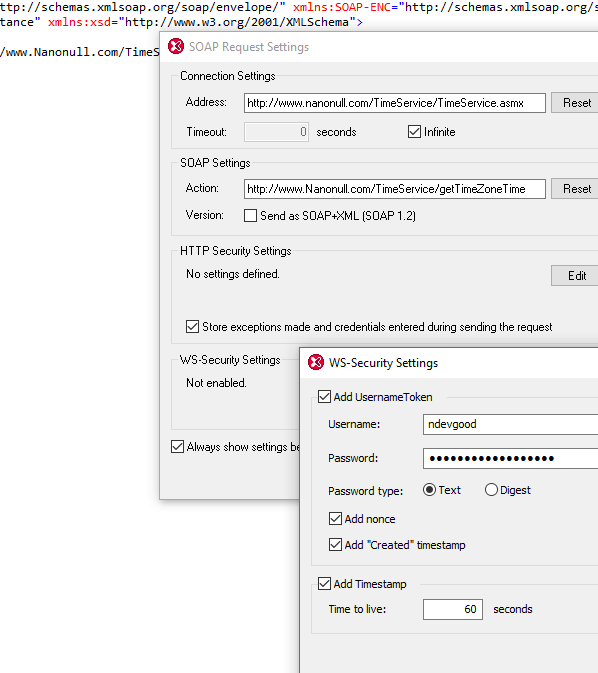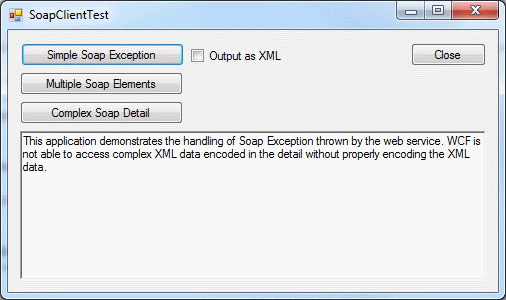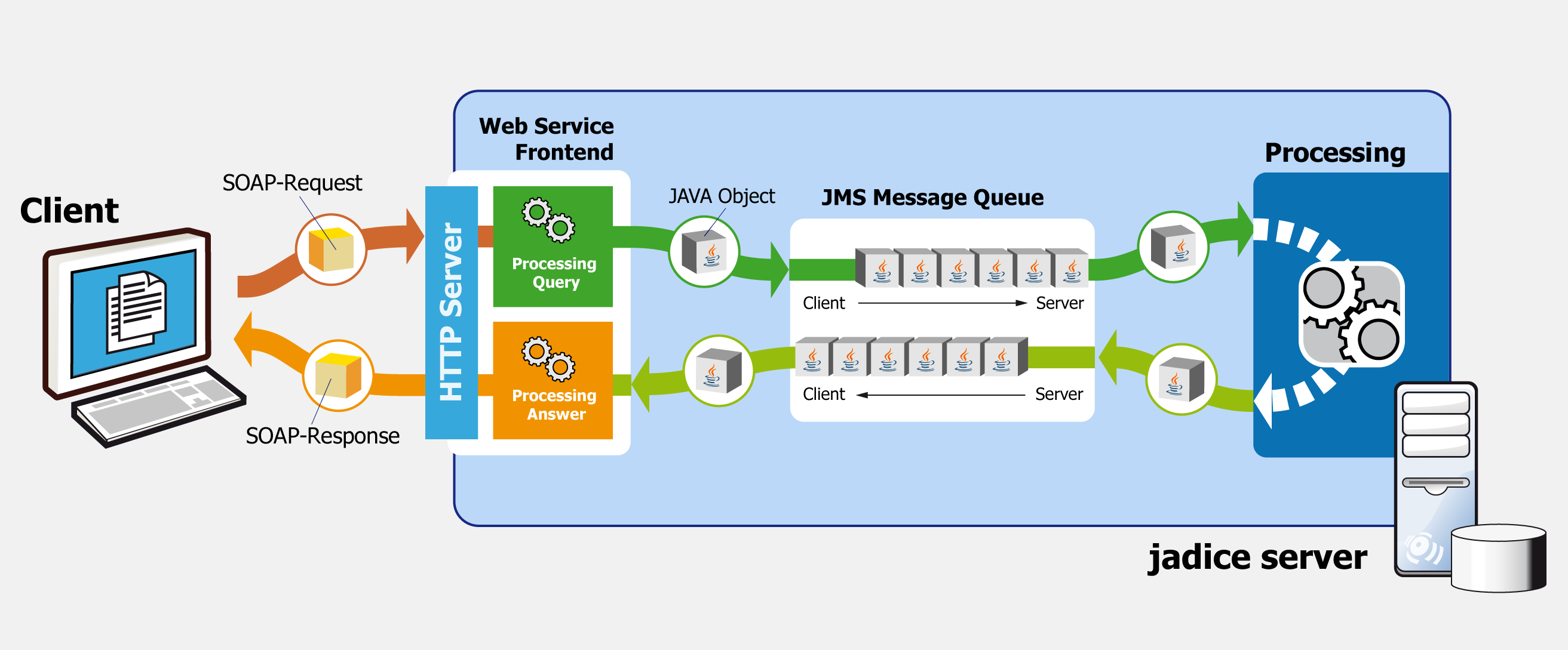In this article i am going to explain briefly the implementation of Suds Client. Suds is a lightweight library that uses SOAP based clients for python. SOAP is an RPC (Remote Procedure Call) that uses object-oriented protocol. Suds is actually lightweight SOAP python client that provides a service proxy for web services. Can we create soap xml client with out using string soap xml. With using c# code. Like as: var request =(HttpWebRequest)WebRequest.Create(uri); request.Method = Common.Method; For example one c# method that creates more than one soap xml client to the different wsdl services with parameters. – Dvlpr May 20 '17 at 20:49. Generic SOAP Client: The generic SOAP client allows you to execute SOAP services using a web browser. SOAP Interop Testing: SOAP Interoperability Test is an effort to make SOAP implementations interoperable with each other. It defines a set of standard methods that can be invoked by clients of other implementations.
Hello there, fellow enterprise developer. Before we get to the solution to our problem, let’s take a minute to close our eyes and reflect on our past decisions that led us to this moment. What could we have done differently? Was SOAP inevitable? Is pain a necessary aspect of joy? Ok, now open your eyes, and we can face this reality together.
This post will show how we can consume a SOAP web API in our .NET Core projects. The steps we will take are few, but the value we derive will be limitless. Let’s get started!
Step 1. Install .NET Core 2.1
We will be using a .NET Core tool, which targets .NET Core 2.1. Don’t skip this step; we need .NET 2.1 and not some other version of the SDK.We can download the installer for our specific operating system on the .NET site.. This tool targets 2.1 and that is why we need to install this SDK specifically.
Step 2. Tool Manifest
In all likelihood, we only need to use SOAP in one of our projects, so its recommended to use a local tool manifest. In our solution directory, we can run the following command.
When the command completes successfully, we will see a .config/dotnet-tools.json file—the JSON file stores our installed .NET tools.
Step 3. Install dotnet-svcutil Tool
We need to install the dotnet-svcutil tool. We can install it locally by running the following command.
We can install the tool globally for those of us that will be dealing with multiple SOAP APIs.
Step 3. Generating The Service Client
We’re almost nearing the end of this post. From the command line, we need to generate our web service reference. In our project directory, not solution directory, we need to run the following command.
There are many public SOAP APIs, and we can test the process using a text casing API found at here.
When running the command, we should see the tool output the results.

The dotnet-svcutil will update our .csproj file with the necessary System.ServiceModel dependencies. The tool will also create a new ServiceReference folder with two files: dotnet-svcutil.params.json and Reference.cs. The Reference.cs file will have the C# implementation of our SOAP API.
Step 4. Consuming the SOAP API
Consuming the newly generated SOAP interface in our code is as straight-forward as new Client(); depending on the SOAP client we generated, the name will be different. Let’s look at the implementation from our SOAP service listed above.
Conclusion
The dotnet-svcutil works on multiple different types of web services, including WCF. Anyone interested in the tool’s capabilities can run dotnet dotnet-svcutil -h to see all the options available to us. For folks who need more information on the tool, [you can find the documentation here].(https://docs.microsoft.com/en-us/sharepoint/dev/general-development/step-2-adding-a-web-reference).
Go forth enterprise developer, and SOAP on! Thanks for reading, and let me know in the comments if this post helped.
A fast and modern Python SOAP client

- Compatible with Python 3.6, 3.7, 3.8 and PyPy
- Build on top of lxml and requests
- Support for Soap 1.1, Soap 1.2 and HTTP bindings
- Support for WS-Addressing headers
- Support for WSSE (UserNameToken / x.509 signing)
- Support for asyncio via httpx
- Experimental support for XOP messages
A simple example:
Quick Introduction¶

Zeep inspects the WSDL document and generates the corresponding code to use theservices and types in the document. This provides an easy to use programmaticinterface to a SOAP server.
The emphasis is on SOAP 1.1 and SOAP 1.2, however Zeep also offers support forHTTP Get and Post bindings.
Parsing the XML documents is done by using the lxml library. This is the mostperformant and compliant Python XML library currently available. This resultsin major speed benefits when processing large SOAP responses.
The SOAP specifications are unfortunately really vague and leave a lot ofthings open for interpretation. Due to this there are a lot of WSDL documentsavailable which are invalid or SOAP servers which contain bugs. Zeep tries tobe as compatible as possible but there might be cases where you run intoproblems. Don’t hesitate to submit an issue in this case (but please firstread Reporting bugs).
Installation¶
Zeep is a pure-python module. This means that there is no C code which needsto be compiled. However the lxml dependency does contain C code since it useslibxml2 and libxslt. For linux/bsd this means you need to install libxml2-devand libxslt-dev packages. For Windows this is unfortunately a bit morecomplicated. The easiest way is to install lxml via wheel files since thatcontains already compiled code for your platform.
To install wheel files you need a recent pip client. Seehttps://pip.pypa.io/en/stable/installing/ how to install pip on your platform.
If you have installed pip then run:
Note that the latest version to support Python 2.7, 3.3, 3.4 and 3.5 is Zeep 3.4,install via pip install zeep3.4.0
This assumes that there are wheel files available for the latest lxml release.If that is not the case (https://pypi.python.org/pypi/lxml/) then firstinstall lxml 4.2.5 since that release should have the wheel files for allplatforms:
When you want to use wsse.Signature() you will need to install the pythonxmlsec module. This can be done by installing the xmlsec extras:
For the asyncio support in Python 3.6+ the httpx module is required, thiscan be installed with the async extras:
Getting started¶
The first thing you generally want to do is inspect the wsdl file you need toimplement. This can be done with:
See python-mzeep--help for more information about this command.
Note
What Is A Soap Client
Zeep follows semver for versioning, however bugs can always occur.So as always pin the version of zeep you tested with(e.g. zeep4.0.0’).
A simple use-case¶

To give you an idea how zeep works a basic example.
The WSDL used above only defines one simple function (Method1) which ismade available by zeep via client.service.Method1. It takes two argumentsand returns a string. To get an overview of the services available on theendpoint you can run the following command in your terminal.
Note
Note that unlike suds, zeep doesn’t enable caching of the wsdl documentsby default. This means that everytime you initialize the client requestsare done to retrieve the wsdl contents.
User guide¶
- The Client object
- Settings
- Transports
- Datastructures
- WS-Security (WSSE)
- Plugins
- Reporting bugs
Simple Soap Client
API Documentation¶
Changelog¶
What Is Soap
- Changelog